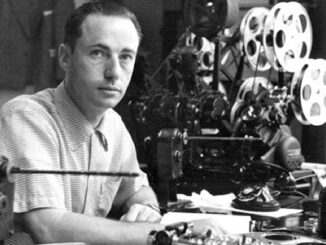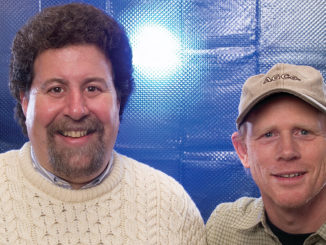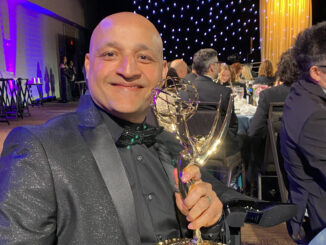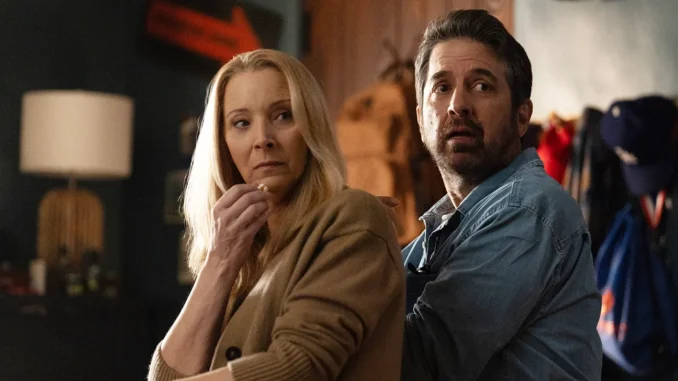
By Rob Feld
Nicole Brik found editing through the serendipitous click of a button.
Back in high school, as Final Cut Pro made its consumer debut, Brik had her first taste of the craft while putting together a creative project. “I had no idea what I was doing,” she recalled, laughing. “I just pressed buttons, and magic happened.” Storytelling and accessible technology intertwined, and Brik was hooked.
From there, her path wasn’t exactly linear. Convincing immigrant parents that Hollywood could be a viable career option required research and, as she puts it, “facts.” With numbers from the Editor’s Guild salary scale and opportunities offered through ACE—internships, student competitions—Brik built her case for film school, after a detour through the hospitality industry. “It wasn’t what I wanted,” she said of the latter option. After a few unfulfilling years, she called it quits and applied to grad school at Chapman University, eager to start fresh.
One milestone led to another: a nomination in the ACE student competition, countless hours spent commuting between Orange County and Los Angeles, and finally, her first big break—landing a night assistant editor position on “Community” just after earning her union days. “Literally on my 100th day, I got the call,” she said.
Brik’s latest collaboration with showrunner Liz Feldman is “No Good Deed,” a dark comedy, streaming on Netflix, that unfolds over eight half-hour episodes, following three very different families as they compete to buy a 1920s Spanish-style villa in the seemingly idyllic Los Angeles neighborhood of Los Feliz. The home promises to solve their problems but quickly reveals itself as anything but a dream. At the center of the chaos are Lydia and Paul Morgan, played by Lisa Kudrow and Ray Romano, empty nesters with conflicting views on selling their family home. As they grapple with dark and dangerous secrets buried within the walls, the couple finds themselves at a crossroads, facing life-altering changes they never saw coming. While Lydia begins to express emotions that she has long suppressed, Paul remains stoic, their contrasting responses echoing the home’s haunting legacy.
CineMontage: Tell me about your relationship with showrunner Liz Feldman and finding the grammar for the series in its pilot?
Nicole Brik: What was interesting when I started “Dead to Me” [the 2019 dark comedy created by Feldman] was that, at the time, my resume didn’t show a lot of comedy experience. I’d done a short film here and there, but not much more. Liz, however, was looking for someone who had both comedy and dramatic experience—someone who could land in that sweet spot in between. She liked the dramatic work I’d done, and I think she figured with her comedy background, we’d find that balance together. I actually got to cut an episode directed by someone I’d interned for right after grad school. He was so happy with the episode that he sang my praises to Liz. From there, I just got her tone and her sense of dark humor. That first season, I barely saw her in the edit, and I thought, Am I doing this right? But as it turns out, that was a good thing. I nailed the tone early on, and that made her life easier. That’s how I ended up working on all three seasons of “Dead to Me” and ultimately on “No Good Deed.” I was nervous about the new project because I wanted to prove I wasn’t a one-trick pony, that I could do more than just “Dead to Me.” I’m happy to say that it went great. I was able to hear her voice and understand the tone of the show from the start.
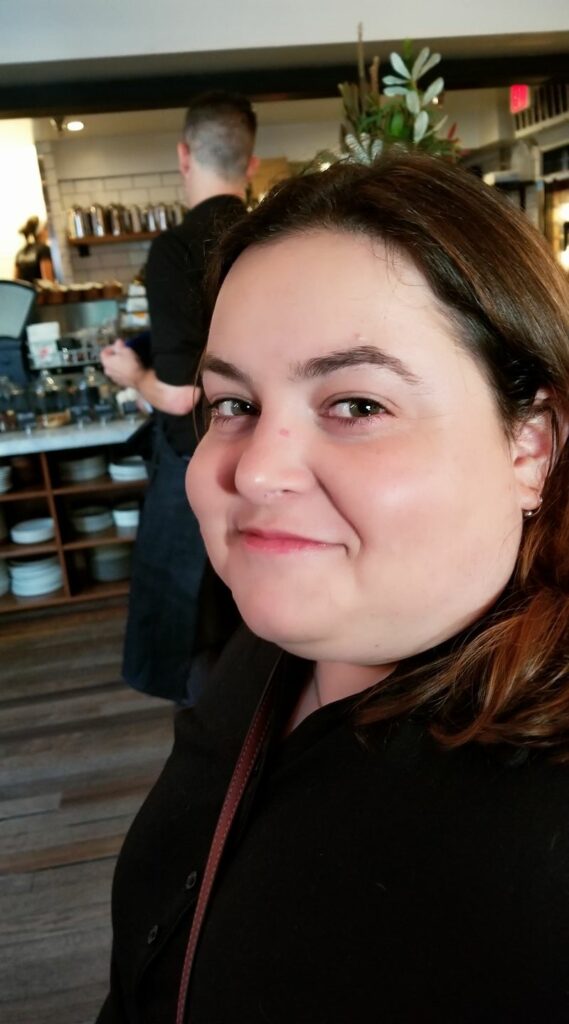
CineMontage: Can you give an example of a moment where you discovered, “Ah, this is what the show is?”
Brik: The DNA of Liz’s shows really is dark humor. With “No Good Deed,” we let ourselves play with the comedy a bit more, especially since the script deals with such heavy themes of grief and loss. The characters—Lydia and Paul—are going through very different journeys, so we needed to strike the right balance. There’s one scene early in the pilot where Lydia and Paul are sitting in their son’s room, discussing whether to sell the house. I went back and forth on that scene throughout the entire cutting process because I had to make sure we stayed true to their experiences and emotions. Some takes leaned more comedic, others leaned more dramatic. Once I started seeing dailies for the rest of the season, I worked to make Lydia’s voice consistent and grounded in that moment. Lisa Kudrow is so naturally funny, but I wanted to stay true to the reality of her grief and her journey as a mother. That scene really set the tone for the rest of the show.
CineMontage: A show like this has to balance comedy, suspense, and drama. What kind of coverage would you get—lots of it or very specific takes?
Brik: There weren’t storyboards for most of the show. We typically shot with two cameras. The only parts that were storyboarded were the VFX transition sequences, for which we had pre-vis so we could nail the timing before they filled out the shots. We were working with such a stacked cast of comedic actors, there was so much gold beyond what was in the script. But we also had to be careful not to throw in comedy just for comedy’s sake—we needed to stay true to the characters. There was coverage, but it was very scene-specific. For example, the opening scene read like a one-er in the script, and that’s how they shot it at first. At some point, they decided to grab some coverage as a safety net, which ended up being a smart decision. For a while, we lived in that one-er up until the kitchen scene. But we realized we wanted to get to Paul and Lydia’s story sooner, so the coverage gave us the flexibility to tighten the timing and make the pacing work better.
CineMontage: Do you get to weigh in on decisions like that—asking for safety coverage—or was it a production call?
Brik: I believe Liz and directing producer Silver Tree had that conversation ahead of time. I think they still had the intention of doing the one-er, but they also had the foresight to grab the coverage. I’m really glad they did—it ended up being the right call for the show.
CineMontage: What was important to you about this show?
Brik: What was incredible about this experience was the fully collaborative environment. I shared so many of the same instincts as Liz and Silver, and that made the process so smooth. Having those relationships is essential and really contributes to the success of a show. That’s true not just for this series but for any project you work on. I had such a good time working on it. I really appreciate Liz’s storytelling, and I hope to continue collaborating with her in whatever capacity I can. You learn something new with every project, and for this one, it was about handling an ensemble cast. I learned how to maintain a clear story arc and voice for each character. At one point, we actually made a supercut of one character’s scenes to watch their arc in full. It was a pivotal storyline, and we wanted to make sure it paid off by the end of the season. It was worth the effort to make sure everything tracked and hit the right emotional beats. We sat down, watched it through, and thought, Okay, we’re good.



